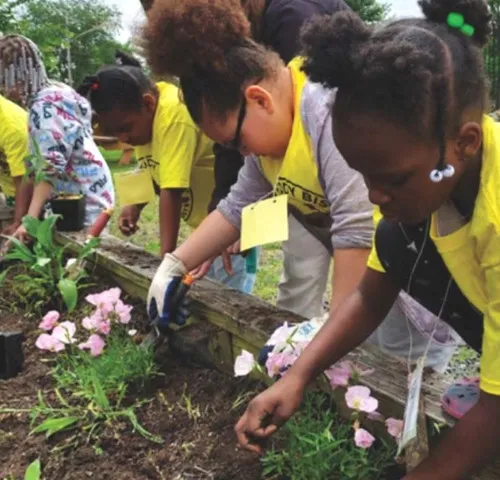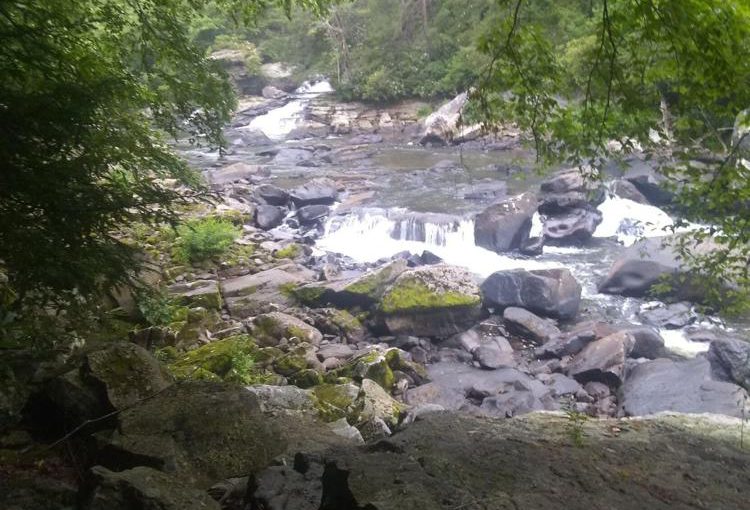The Southern Maryland Chronicle
As the signs of spring begin to appear across Maryland, anglers are preparing for a variety of fishing opportunities throughout the state. From trout season openings to striped bass pre-spawn runs and white perch spawning runs, Maryland offers something for every angler.
Trout Season Opens in Maryland
One of the most anticipated events for Maryland anglers is the opening day of trout season, which falls on Saturday, March 25 this year. The state’s Department of Natural Resources hatcheries have been working hard to ensure generous stockings of healthy trout in put-and-take management waters across the state.
According to the Department of Natural Resources, Maryland has over 100 stocked trout streams, with many of them located within an hour’s drive of Baltimore and Washington, D.C. These waters are stocked with rainbow, brown, and brook trout, and anglers are allowed to keep up to five fish per day.
Maryland’s trout season typically runs from March through May, with some waters open for catch-and-release fishing throughout the year. To ensure a successful fishing trip, anglers should check the DNR’s trout stocking website for the latest information on stocking schedules, maps, and other trout fishing information.
Pre-Spawn Striped Bass in Susquehanna Flats
As spring arrives in Maryland, the state’s water temperatures are warming, making it a prime time for gamefish like striped bass to spawn. Anglers are expected to be out in full force, casting large crankbaits and soft plastics for pre-spawn striped bass in the Susquehanna Flats catch-and-release area.
According to the Department of Natural Resources, the Susquehanna Flats area offers some of the best striped bass fishing in the state. The area is a shallow-water spawning ground for striped bass, and anglers are required to use artificial lures only and practice catch-and-release fishing to protect the fish population.
Anglers should also be aware of the regulations for striped bass fishing in Maryland. The minimum size for striped bass is 19 inches, and anglers are limited to keeping two fish per day. In addition, the main part of the Chesapeake Bay is closed to striped bass fishing from April 1 to May 1 to protect the striped bass population during their spawning season.
White Perch Spawning Runs
Spring is also a prime time for white perch spawning runs in Maryland’s rivers and streams. Anglers are picking away at post-spawn yellow perch as these fish move downriver from their spawning areas. Lip-hooked minnows will be the best bait to use. The second run of white perch is occurring in spawning rivers, and the top half of the flood tide usually offers the best fishing for them.
According to the Department of Natural Resources, white perch are one of the most popular gamefish in Maryland, with the largest populations found in the Chesapeake Bay and its tributaries. White perch are known for their hard fighting and delicious taste, and can be caught using a variety of baits and lures.
Anglers should be aware of the regulations for white perch fishing in Maryland. The minimum size for white perch is 9 inches, and anglers are limited to keeping 25 fish per day.
Catfish, Crappie, and Pickerel Fishing
Maryland’s rivers and streams also offer plenty of opportunities for catfish, crappie, and pickerel fishing. A mix of blue and channel catfish are entertaining anglers in the upper Bay and tidal rivers, while crappie are very active this week and can be found near structure in moderately deep waters. Using small marabou jigs or small minnows under a slip bobber is an excellent way to fish for them.
Freshwater Fishing
Moving on to freshwater fishing, Saturday, March 25, marked a significant day for put-and-take trout anglers all across Maryland. The state’s Department of Natural Resources opened waters that were previously closed to trout fishing at 5:30 a.m. for those who wanted to try their hand at trout fishing. The stocking crews had been working overtime to place healthy trout in these waters, ensuring that anglers would have an enjoyable experience.
Warming water temperatures have caused many freshwater species to become more active this first week of spring. At Deep Creek Lake and the upper Potomac River, smallmouth bass and walleye are entertaining anglers. Largemouth bass are becoming more aggressive in their feeding habits as they enter their pre-spawn bulk-up of body stores. They can often be found holding near structure in moderately deep waters – sunken wood, fallen treetops, rocks, bridge piers, emerging grass, and drop-offs are all good places to find them. Working wacky rigged or dropshot rigged soft plastics and stick worms is a good choice to entice a pickup. Casting grubs, crankbaits and jigs near structure is also a good choice. On sunny afternoons, the shallower waters are good places to cast spinnerbaits, soft plastics, jerkbaits, and lipless crankbaits.
Crappie are very active this week and can be found near structure in moderately deep waters. Using small marabou jigs or small minnows under a slip bobber is an excellent way to fish for them. Fallen treetops, marina docks, bridge piers, and most any kind of submerged structure are good places to look for them.
Chain pickerel are still very much in play for anglers casting paddletails and other lures near shoreline structure. Sunken wood is a favorite ambush hangout for chain pickerel. Bluegill sunfish are active this week and can be caught on a variety of small lures or a simple worm and bobber combination.
Atlantic Ocean and Coastal Bays
Finally, in the Atlantic Ocean and Coastal Bays, there have been a few unconfirmed reports of the first flounder being caught in the back bay regions of Ocean City. Flounder are starting to show up at Wachapreague, so flounder should be showing up in the Ocean City area now or very soon.
Anglers are fishing for tautog at the inlet and Route 50 Bridge area this week. Most of the fish being caught are reported to be just shy of the 16-inch minimum, but there is plenty of action on sand fleas. Other anglers are casting soft plastic jigs around bridge and jetty structure and catching a few striped bass, but most are not making the 28-inch minimum.
The boats and anglers wishing to head out to the wreck and reef sites in search of tautog are finally seeing calmer seas. Many anglers have been catching large tautog, with some exceeding 20 pounds. These are true trophy fish, and most anglers respect how old they are and release them. White legger crabs tend to be the favored bait for these large fish, but other anglers are having good luck with jigs on smaller fish.
In summary, anglers all across Maryland have plenty of options to choose from this week. From trout fishing to chasing trophy tautog in the Atlantic Ocean, there is something for everyone. The warming temperatures and increasing daylight hours will only make for more active fish, so it’s a great time to get outside and enjoy all that Maryland has to offer for anglers.









